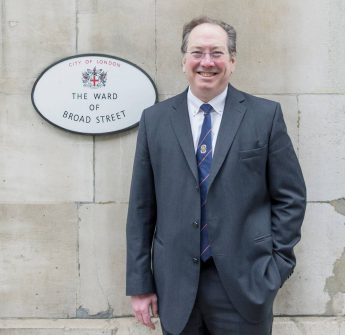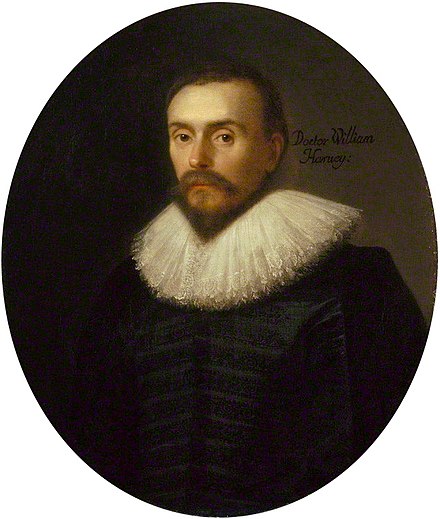William Harvey (1 April 1578 – 3 June 1657) was an English physician who made influential contributions in anatomy and physiology. The William Harvey Annual Review is a one-day internal conference that celebrates the most outstanding research activities within the Institute.
Remarks to: The Rt Hon The Lord Mayor of London Alderman Professor Michael Mainelli on William Harvey Day, Barts Hospital, Thursday, 10 October 2024:
Ladies & Gentlemen,
Thank you very much to Queen Mary, University of London, for inviting me to join you here at Barts Hospital for William Harvey Day and the annual Schorstein Lecture, named after Gustave Schorstein, a physician at the Royal London Hospital renowned for his public lectures.
I am Alderman Professor Michael Mainelli, the 695th Lord Mayor of the City of London – the elected head of the world’s oldest democratic workers’ and residents’ cooperative, the City of London Corporation; the governing body of the Square Mile; and perhaps not so renowned for my lectures.
For several years, Dan Coffey produced a humorous US radio programme I enjoyed called, “Ask Dr Science!”. The catch lines included “he knows more than you do”. The sketches conclude with the disclaimer that Dr Science is “not a real doctor,” although Dr Science insists he has “a Master’s Degree… in science!”, and “When I ask you to call me Doctor, I’m just being friendly.”
My objective this morning is to encourage all of you here working and studying at Barts to engage even more widely with our multidisciplinary city as part of this year’s “Connect To Prosper” theme.
Barts and the City
For 900 years now, this hospital has served the people of the City of London. And it has had a particularly close relationship with the City of London Corporation ever since Henry VIII handed the running of the hospital to the Corporation in 1546, following the dissolution of the monasteries. It was renamed the “House of the Poore in Farringdon in the suburbs of the City of London of Henry VIII’s Foundation” but somehow that never caught on as well as “Barts”.
Thirty years ago – long after the City Corporation ceased to have any role in running the hospital – we were closely involved in the campaign to save Barts from closure, and we are very glad to still have our local hospital serving the City community. I was also personally involved in helping to save the pathology lab.
Today we celebrate William Harvey Day because it was here that he spent most of his working life and carried out his crucial research on blood circulation – as a member of the Royal College of Physicians, whose headquarters back then was in Knightrider Street, near St Paul’s Cathedral.
A reminder of how much this City is a city of science and learning as well as commerce – indeed, throughout the City’s history they have gone hand in hand with each other. The theme for my year as Lord Mayor is Connect to Prosper, celebrating the Knowledge Miles of our Square Mile – the world’s coffee house.
Cities As Networks Of Networks
Cities are networked networks of connectivity and information sharing,
forming communication, commercial, and intellectual networks – Knowledge Miles. Cities can be defined by defensive walls, planning permission authorities, taxation districts. Many cities – London and New York spring immediately to mind – have burst their boundaries and expanded by swallowing older villages and boroughs. Large cities are faster because people have more interactions per unit as the city scales up.
Cities are networks of connections. They create – often indirectly – communication, transportation, commercial, and intellectual networks. In my day job, clients often plead at the end of a long day of comparative urban statistics, “please just give us one thing that will lead to a successful commercial centre”.
My simple answer is, “treat all comers fairly”.
More interactions lead to more deals and more structures to prevent cheating. Structures that promote trust, clarity of contract, certainty of delivery, robust enforcement, in short, the Rule of Law. Deals pull in professional, business, financial, and scientific services. Thus professional, business, financial, and scientific services activity can serve as a good indicator of the strength of ‘deal making’ and commercial temperature of the city.
Which brings us back to London as the world’s coffee house. “The history of coffee houses,” said D’Israeli, “ere the invention of clubs, was that of the manners, the morals and the politics of a people.”
The first coffee house in the City of London appeared, according to legend, in 1652 in St Michael’s Alley in Cornhill, run by Pasqua Rosée and partners. Coffee houses were temperance institutions, different from taverns and ale houses.
“Within the walls of the coffee house there was always much noise, much clatter, much bustle, but decency was never outraged.”
By 1715 there were over 800. They were known as Penny Universities by virtue of a standard penny for admission and acquired an appropriate ditty :
So great a Universitie
I think there ne’re was any;
In which you may a Schoolar be
For spending of a Penny.
Spending a penny had a different connotation back then. These coffee houses spawned numerous clubs and numerous business organisations;
oft-cited are the London Stock Exchange and Lloyd’s of London.
The networks of coffee houses created communities. Communities form when people are prepared to be indebted to one another. The links among a community are obligations. Unsurprisingly, coffee houses began to self-issue monetary tokens, both solidifying their community and funding themselves on future coffee consumption.
The Network Of Cities
We have discussed cities as networks. But what about networks of cities. Global cities form a network of their own. In his 1999 essay “How to Get Rich”, biogeographer Jared Diamond set out two principles for communities – connectivity and competition:
Connectivity – On connectivity, I would go further, towards intensity. Opportunities to increase the intensity of interaction should be seized. Airplanes, telecoms, bicycles, mobiles, Uber, all raise intensity, and even those much-detested electric scooters are worth a try.
Competition – Society has many ways of resolving problems. Many of them are neither pretty nor progressive; communism, military rule, legal prescription – the roads to serfdom.
Cities have a mutual interest in showing that competitive commercial centres can cooperate and self-regulate to deliver policy solutions for societal problems such as sustainability, based on market economies.
… and I would add a third:
Deriving Order from Chaos – The Wizard of Oz sees smart cities as a super-connected, super-centralised system, in which the Mayor hides behind a green curtain, seeing all and controlling all.
The Hippie Entrepreneur believes smart cities give free access wherever possible, so that a thousand innovative flowers can bloom. If cities are co-created by everybody, then great metropolises are about everyone’s contribution, and thus as much about accident as design. The haphazard and serendipitous in cities creates opportunities for positive change.
I support the Hippie Entrepreneur. I love this wry quote from Terry Pratchett’s book Interesting Times: “Chaos is found in greatest abundance wherever order is being sought. It always defeats order, because it is better organized.”
Connect to Prosper – over 40 learned societies, 70 universities, 130 research institutes, and 24,000 businesses surround the City of London, with a community speaking some 300 languages, creating a network of knowledge connections as much – or more – science and tech, media and culture, as finance.
The City of London is – rightly – known for its leadership in financial and professional services, but we’re also the biggest centre for tech in the country, with a workforce that includes scientists, engineers, and technicians, as well as bankers, insurers, lawyers, accountants, and actuaries.
‘Connect to Prosper’ shines a spotlight on these other areas of strength – the “Knowledge Miles” I mentioned earlier – and aims to mobilise them to find and finance the solutions to global challenges. Our client, the World, sat down a decade ago and shared 17 big problems that need solutions, the UN Sustainable Development Goals.
‘Connect To Prosper’, with its emphasis on multi-disciplinary networks solving global problems, has its own defined goal – make positive connections in aid of these SDGs. The Square Mile is a hub of dynamic networks that foster innovation, collaboration, and diversity. The coffee house culture of the 17th and 18th centuries spawned the London Stock Exchange and Lloyd’s, helping to give us our modern financial system.
The ‘New Learning’ and ‘Natural Philosophy’ gatherings of Gresham College and the Royal Society spawned science, engineering, and the industrial revolution. In this century, the challenge is to leverage dynamic networks to solve global problems – such as climate change, poverty, or health.
As part of Connect to Prosper, we are reinvigorating the coffee house culture on which London was built, with a series of ‘coffee colloquies’ where thought leaders discuss the major issues of the day, from quantum to AI to mental health, a Knowledge Mile lecture series by experts in many different fields, and a set of public experiments. These include:
• Biodiversity corridors with Pollinating London Together;
• Recreating Einstein’s two clock time dilation relativity experiment using National Physical Laboratory nano-clocks at 22 Bishopsgate – the tallest building in the City.
• Aerodynamics and light experiments at the Monument, which was originally built with a scientific purpose as well as in commemoration of the Great Fire.
We are supporting education, with the 695th Lord Mayor’s Royal Mathematical School scholarship at Christ’s Hospital. And we have launched a range of Connect to Prosper initiatives based on both our knowledge miles and on international standards:
- The Space Protection Initiative, using space debris removal insurance bonds to help keep space clutter-free.
- The Green Finance Initiative, reinforcing carbon markets.
- GALENOS, accelerating global mental health research.
- The Smart Economy Networks Initiative, using international X-Road standards.
- The Ethical AI Initiative – with an Ethical AI course based on ISO 42001, taken by 6000 people from 60 countries and 500 organisations; the Walbrook AI Accord signed in Brussels in May by 38 countries; and the Coffee House Consensus to coordinate ISO 42001 being used by investors, investees and regulators.
- And, of particular interest to this audience… the Constructing Science Initiative, for life science laboratories.
This is a project that provides a standard for new build and retrofit lab conversions for those seeking to have biolabs in urban environments. The project is led by a consortium of life sciences and property organisations – Buro Happold, CPC, Cushman & Wakefield, EEDN, Gensler, Gleeds, Hoare Lea, MedCity, Mission Street, and Ramboll.
The standard has been published, and there is a beta database of some 4 million data points to help developers, design teams, and planners estimate the extent of conversion possible for specific properties.
The Constructing Science initiative has been launched during a boom in life sciences real estate, with the UK Government having announced a £650 million investment to generate growth in the sector to boost the economy. As the initiative progresses, it will incorporate sustainability goals and cost parameters while expanding to include related science spheres such as manufacturing.
Life Sciences is one of the UK’s most successful – and important – sectors, employing over 280,000 people and making £94 billion for the UK economy each year. Constructing Science aims to make sure it will always have a home in places like London, where life science pioneers such as William Harvey made such great strides before.
In the spirit of William Harvey, Ethel Gordon Fenwick and other pioneers at Barts, let us continue to back Science in the City – by constructing science and constructing the knowledge networks on which we all depend.
Mr Spock used to say, “live long and prosper” – I would add, “connect and prosper”. Thank you.

